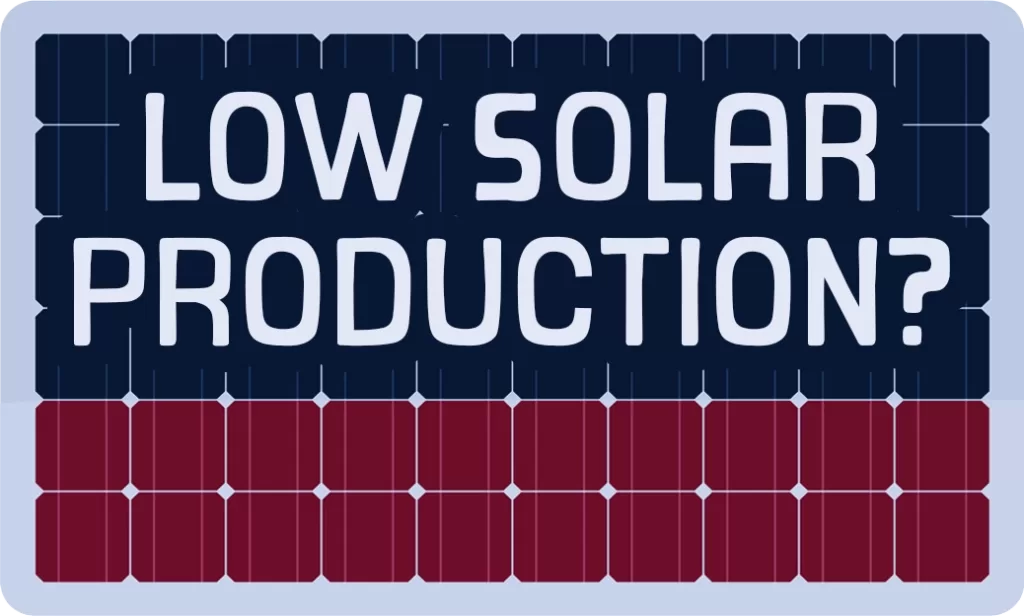
There are several reasons you may see low solar production during the day which are not indicative of problems with your system. Read on to learn how RV solar arrays differ from stationary solar arrays, how incoming solar is limited by the RV house battery bank, and how weather conditions affect solar production.
Peak Solar Production
Flat-mounted panels, like the ones installed on your RV, typically produce 70-80% of their rated maximum capacity. If you have a 1000W solar array, the average peak production you should expect on a sunny day is ~800W. Peak solar conditions in the U.S. last for about 3-5 hours a day, so for the remaining hours of the day, you could expect to see less. Once the sun goes down, there is no solar collection.
Battery Bank State of Charge
Are your batteries full? One main function of the solar charge controller is to turn off charging to the batteries when they’re at full capacity, so if your battery bank is already full, you wont readily see any incoming solar power. This is common on shore power, since your batteries are likely full all the time.
If you’re pulling a small amount of power out of your otherwise full battery bank, the solar will work to replace that power draw.
Weather Conditions
Inclement weather, temperature, amount of shade, season (Winter vs. Summer), and geographical location all change the amount of solar production.
If you’re concerned about the overall production of your solar array, you can check the history of production on your solar charge controller on the Victron Connect app. Navigate to your charge controller, then select the “History” tab. This will display a 30 day history of your daily production, noted as “Total Yield”. “Pmax” is the peak production for each day.
